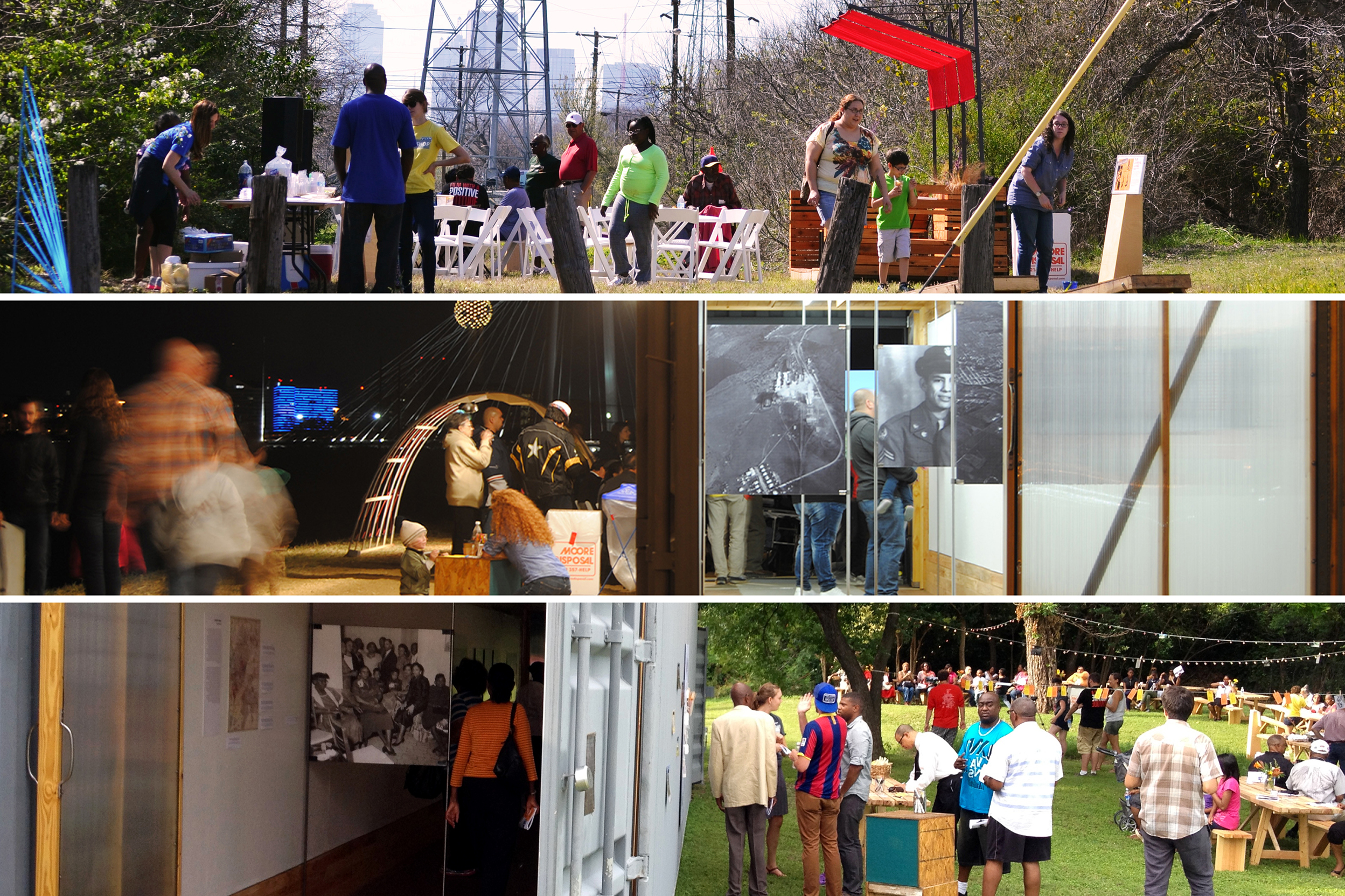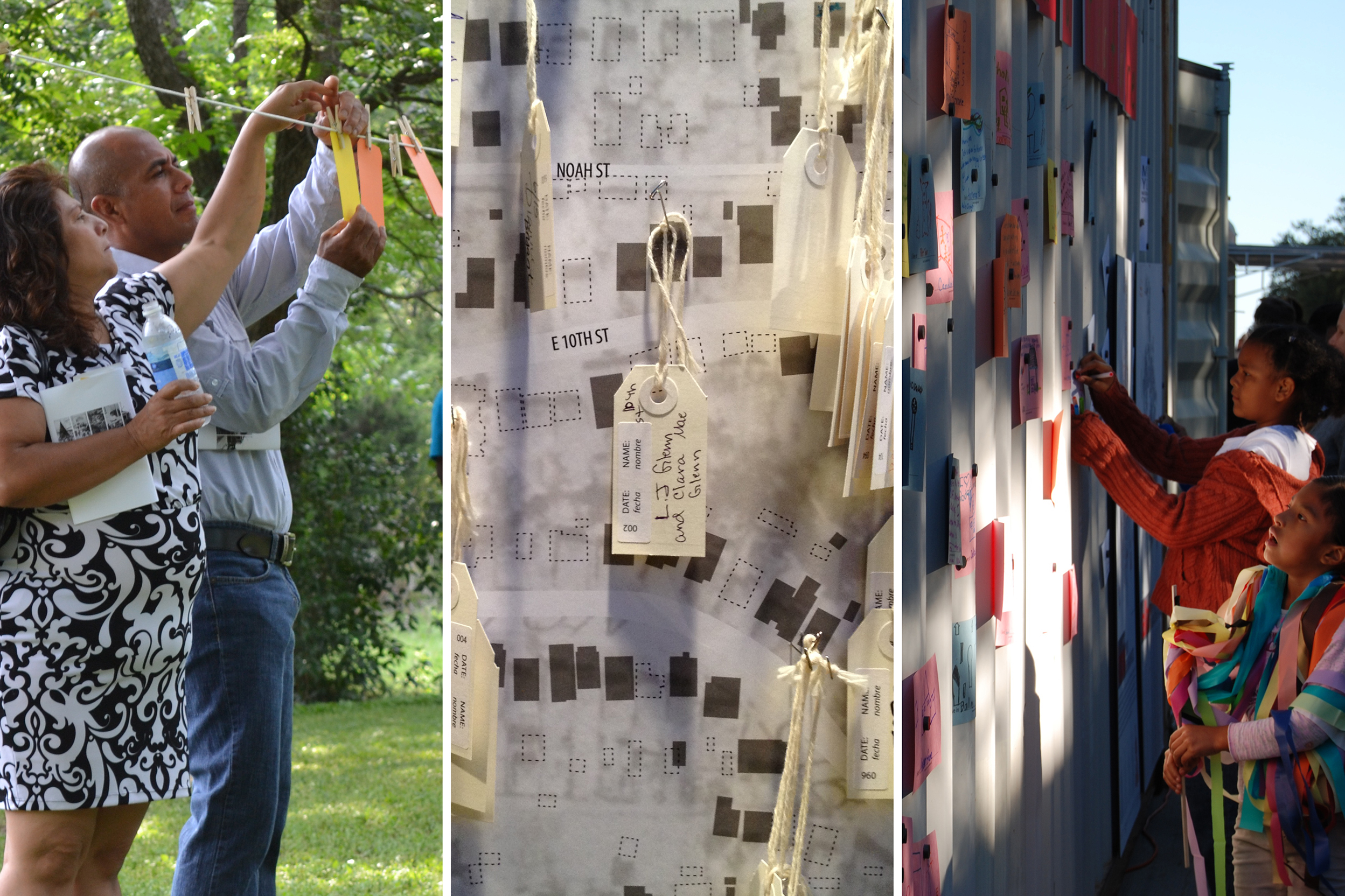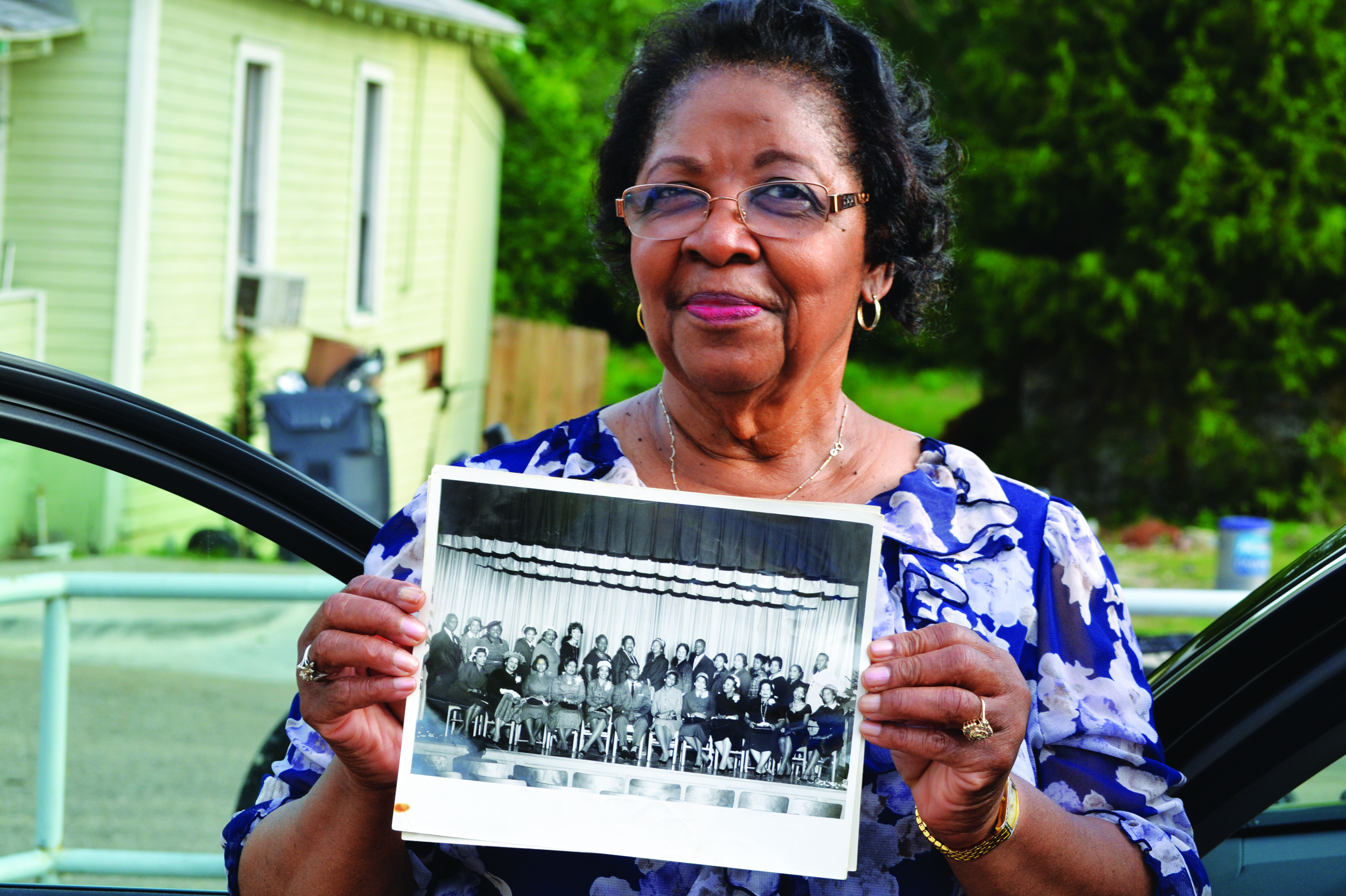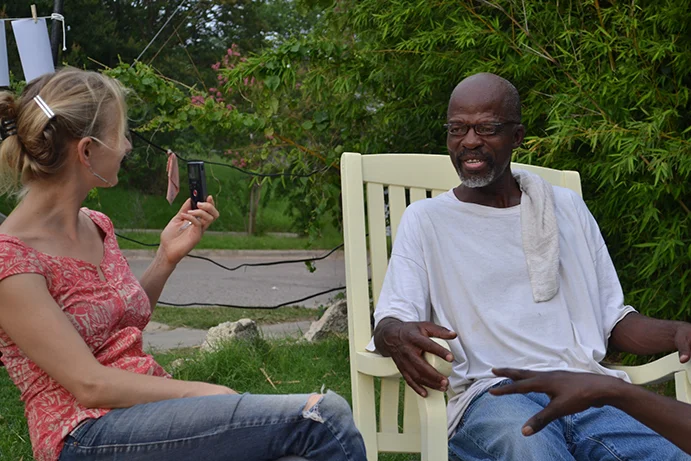Read more about Neighborhood Stories and POP Dallas.
POP Neighborhood Stories has been recognized as a 2014 SEED Award for Excellence in Public Interest Design Honorable Mention! Winning projects span the globe from Peru, Brazil, India, Israel, Mozambique, China, and the United States. We are very proud to have our work recognized along side so many great projects.
2014 SEED Award Winners: Comunidad Ecologica Saludable, Puenta Piedra, Lima Peru Can City, Sao Paulo, Brazil The Potty Project, New Delhi, India Towns Association for Environmental Quality Green Building Headquarters, Sakhnin, Israel Community How-To-Guides, Detroit, Michigan, United States Manica Football for Hope Centre, Bairro Vumba, Manica, Mozambique
Honorable Mentions:Dime Kam Minority Cultural Heritage in China, Dimen, China Walk [Your City], Raleigh, North Carolina, United States POP Neighborhood Stories, Dallas, Texas, United States
The fourth annual SEED Awards received applications from 28 countries. The SEED Award recognizes designs that address the critical social, economic, and environmental issues in the world. Winners were selected by an esteemed jury based on the following criteria: Effectiveness, Excellence, Inclusiveness, Impactful, and Systemic and Participatory. The jury members were: William Morrish, Jury Chair, of Parsons The New School of Design; Cara McCarty of the Cooper-Hewitt National Design Museum; Andres Lepik of the Architekturmuseum der Technischen Universität München; Esther Yang of the Max Bond Center for Design for the Just City; and Christopher London of The New School.
bcWORKSHOP's past SEED Award winning projects include the Congo Street Initiative (Winner, 2011); Gurley Place at Jubilee Park (Honorable Mention, 2012); and Colonias Planning & Implementation (Honorable Mention, 2013).
![[bc]](http://images.squarespace-cdn.com/content/v1/5248ebd5e4b0240948a6ceff/1412268209242-TTW0GOFNZPDW9PV7QFXD/bcW_square+big.jpg?format=1000w)

















































